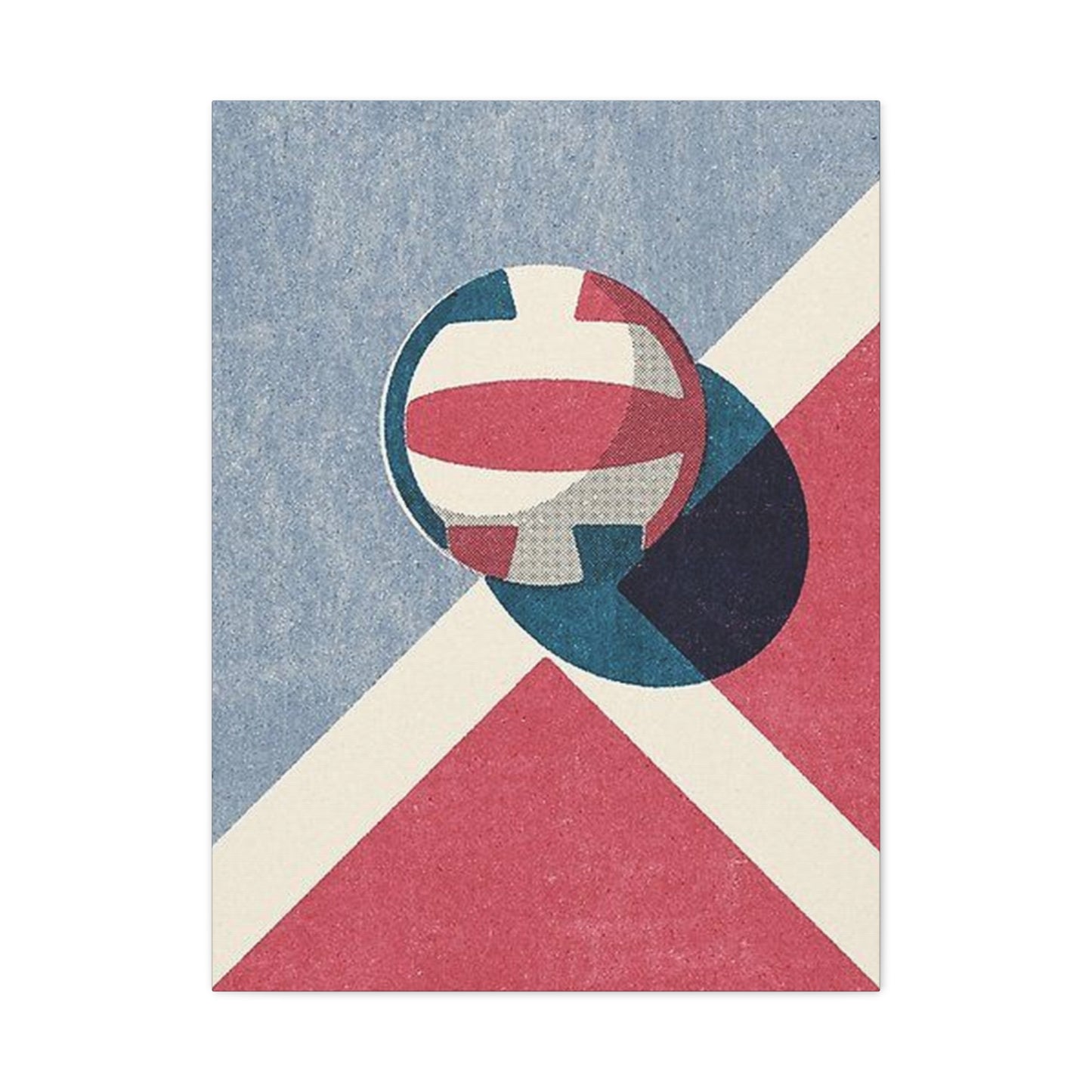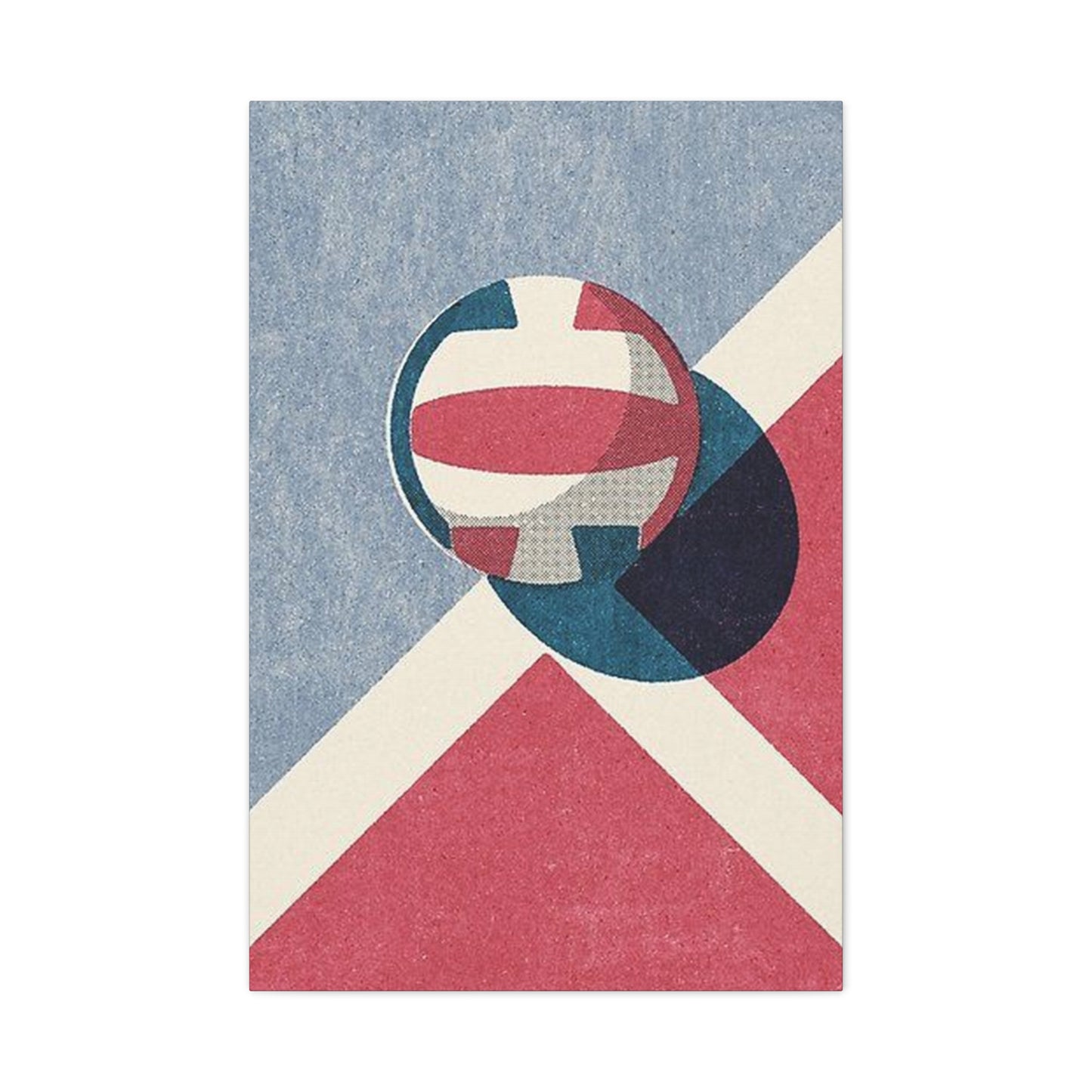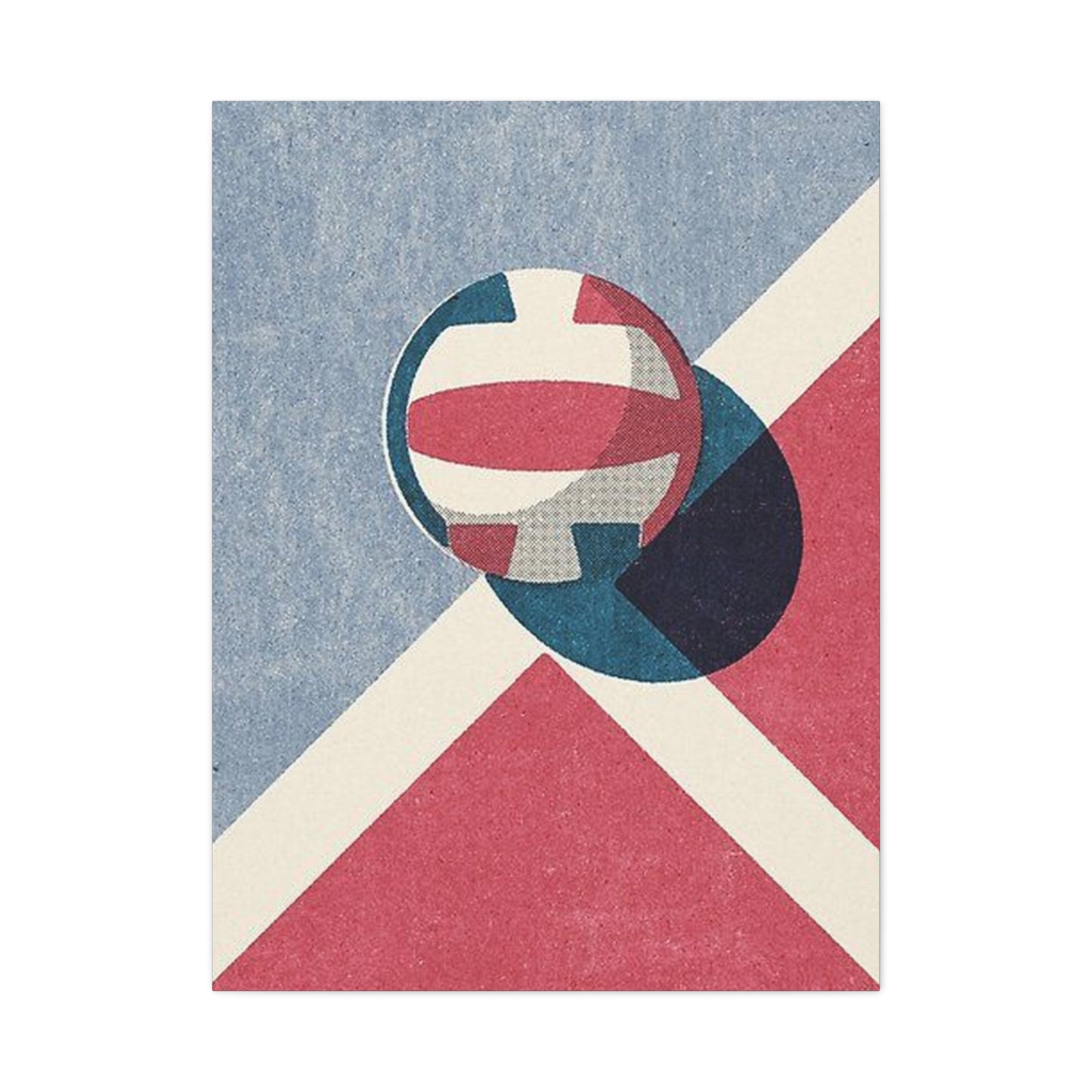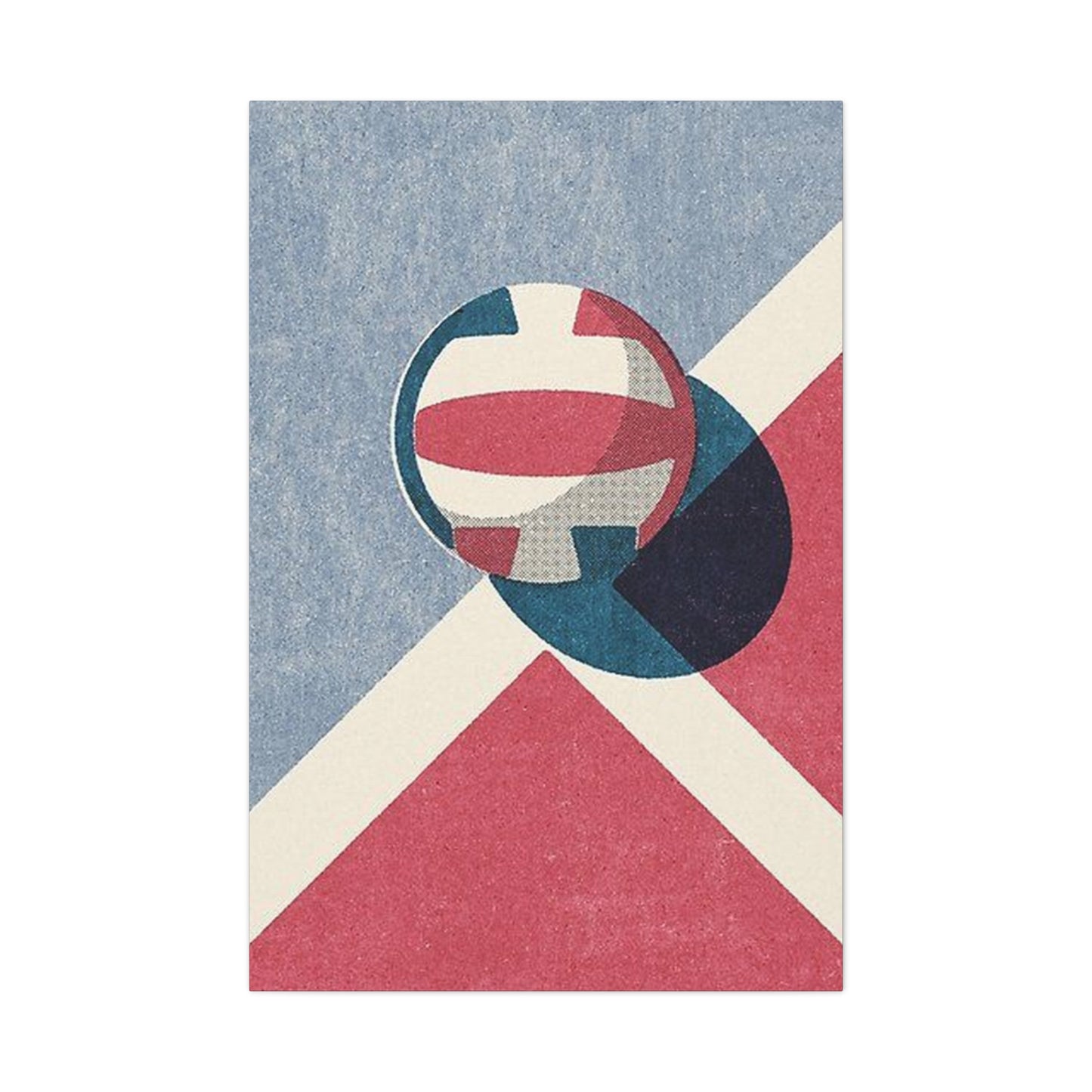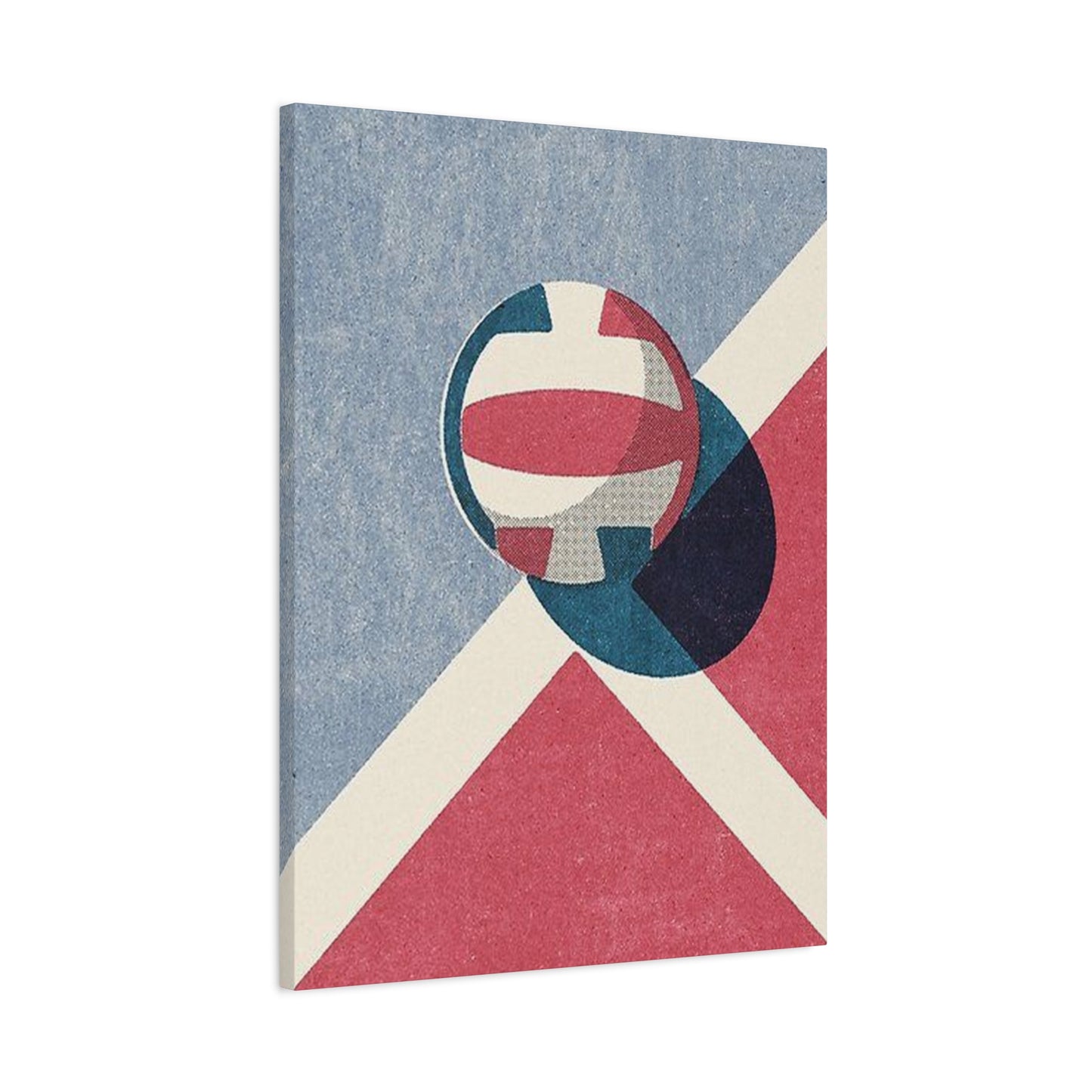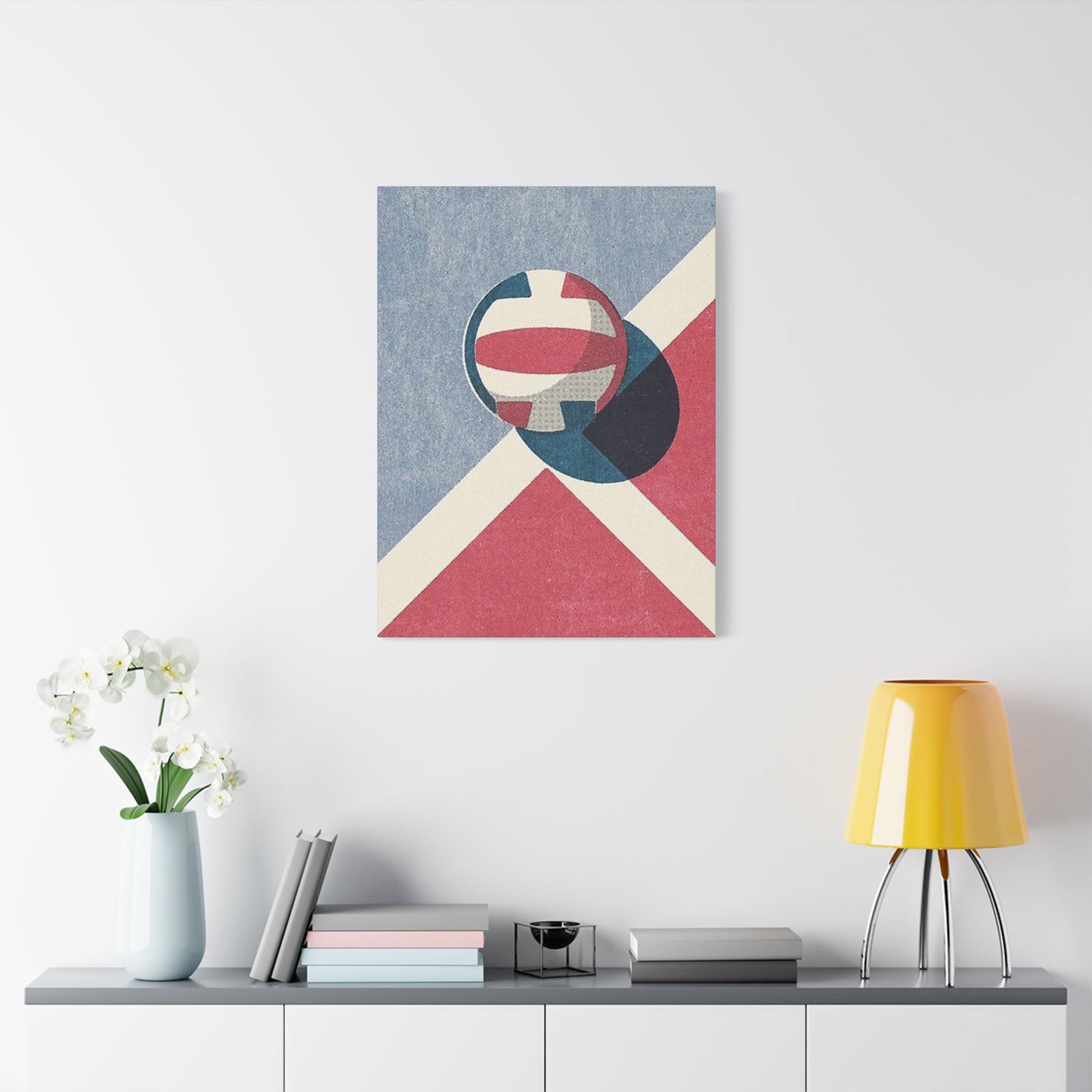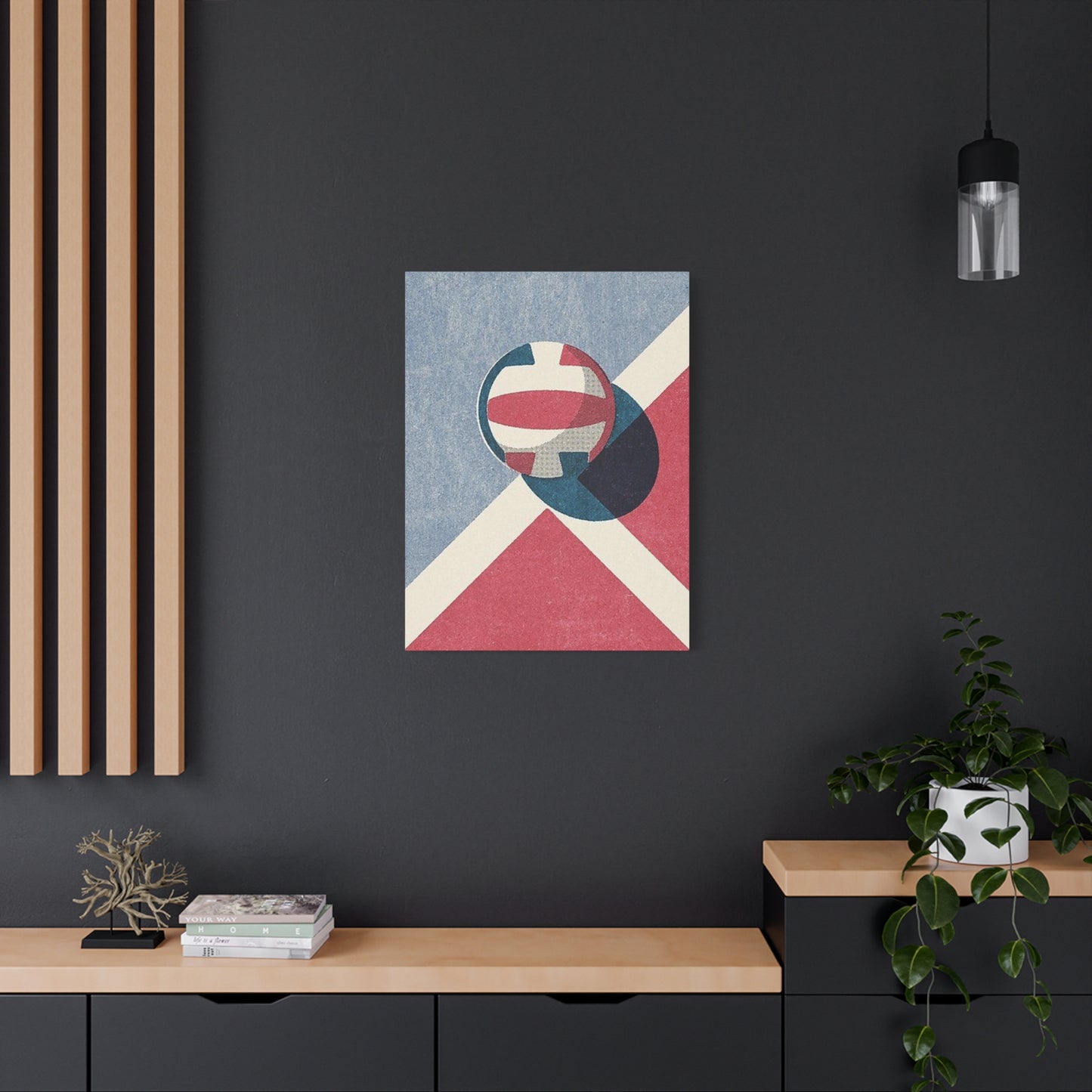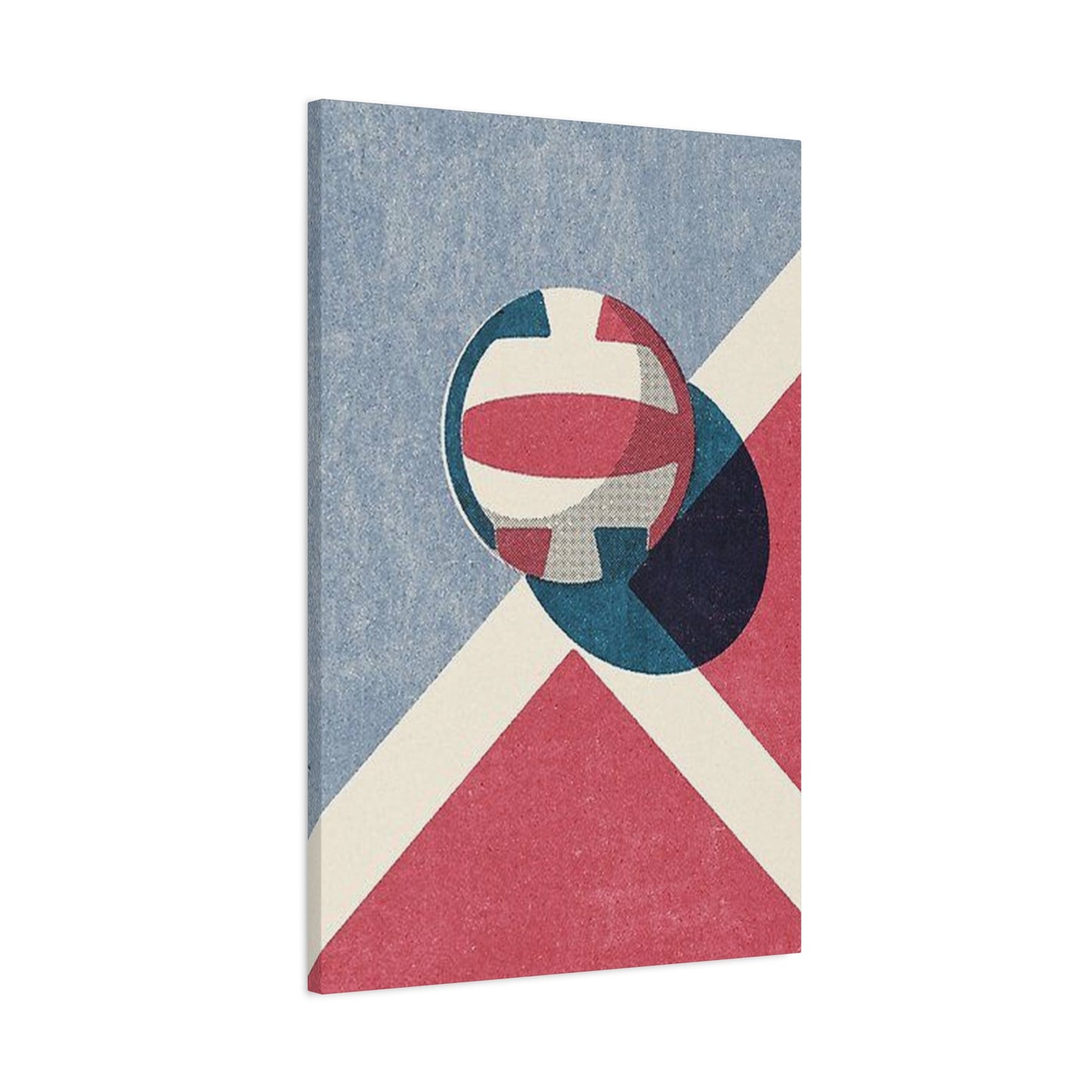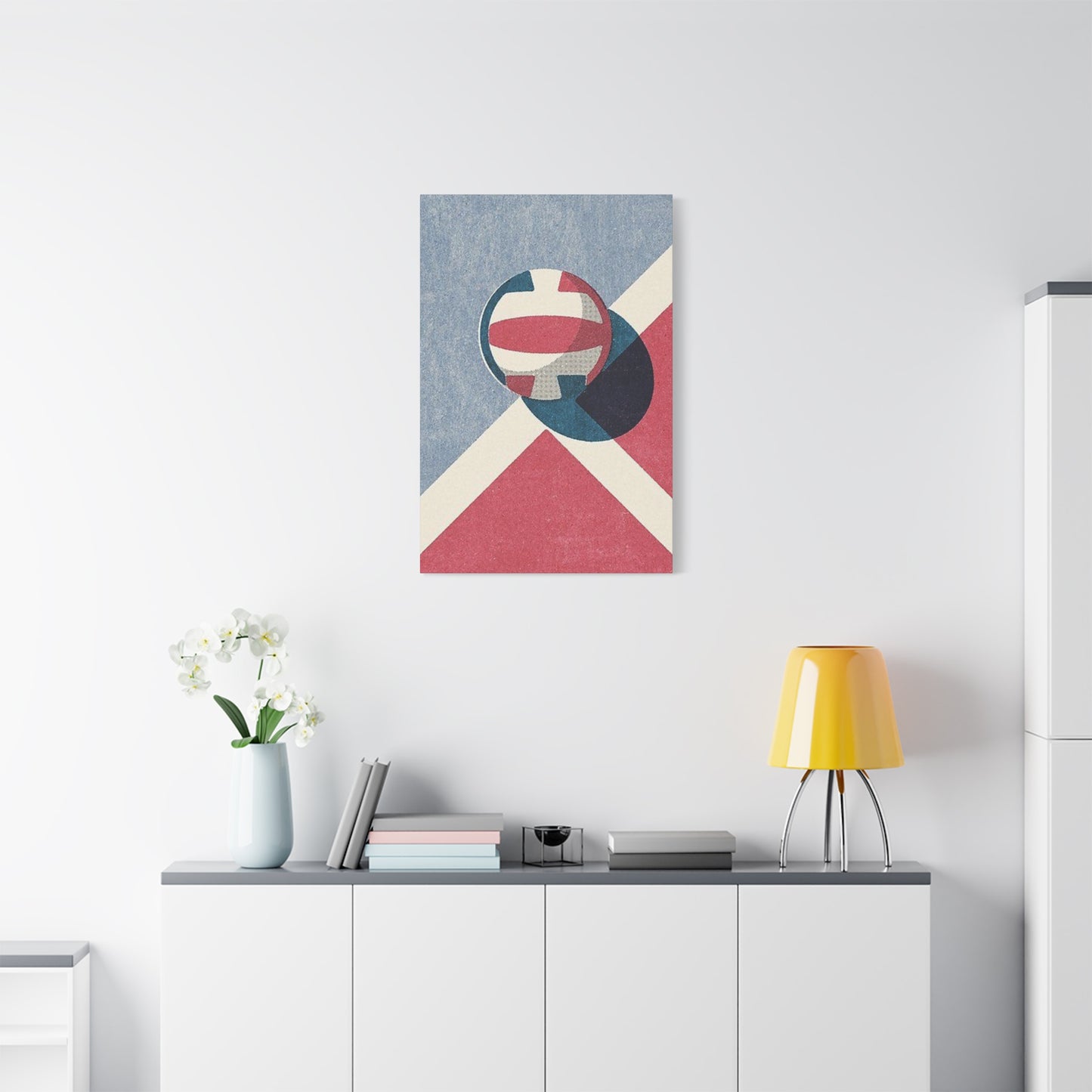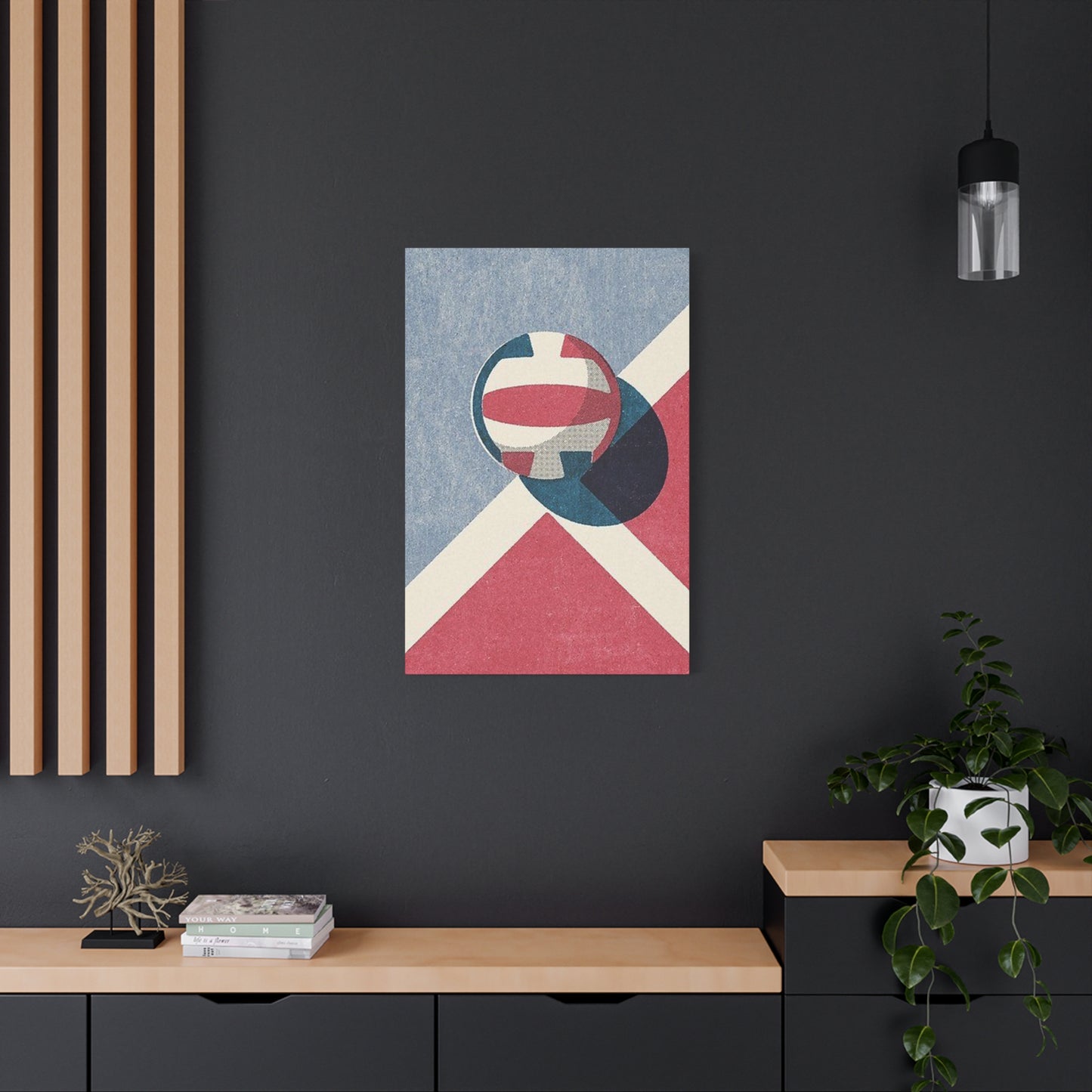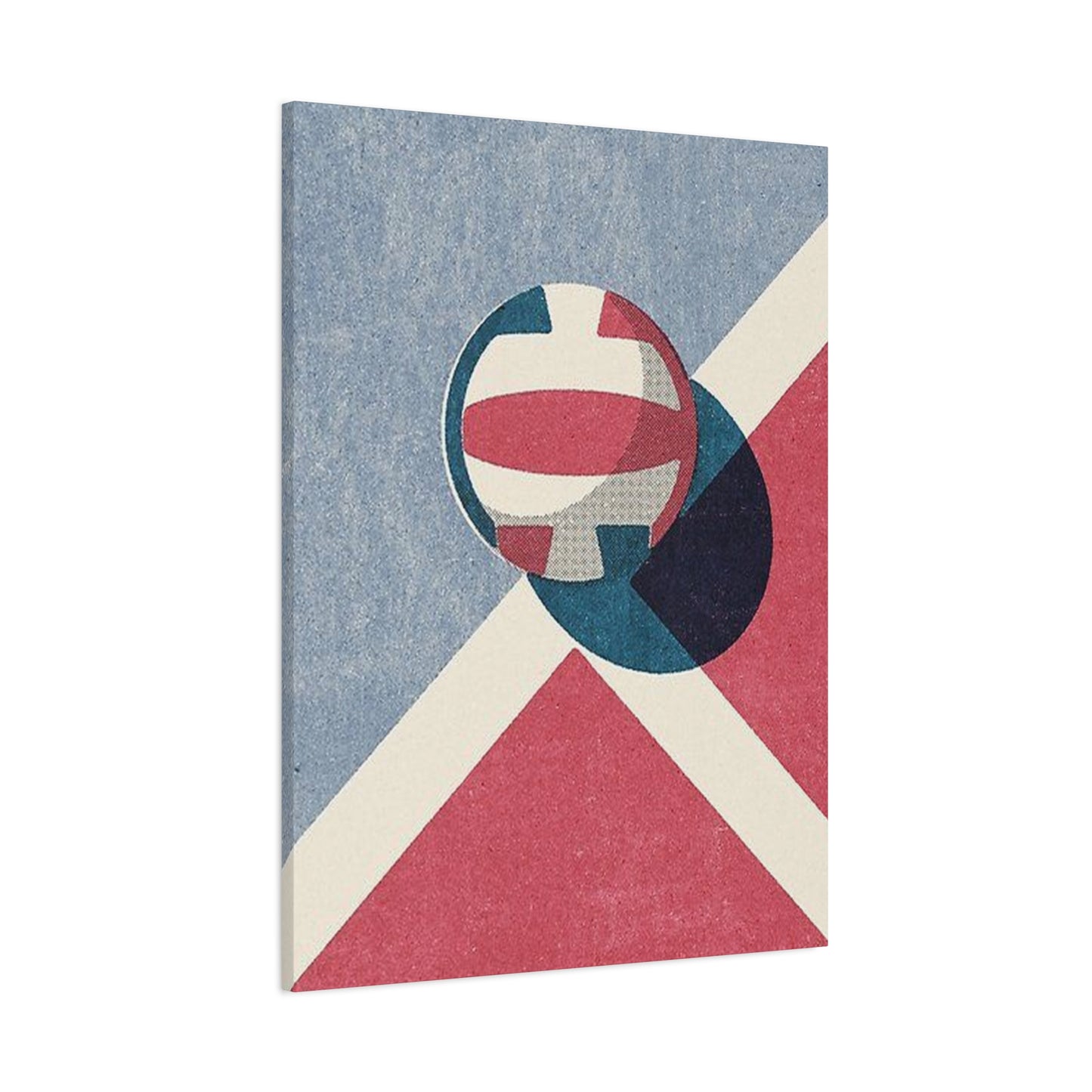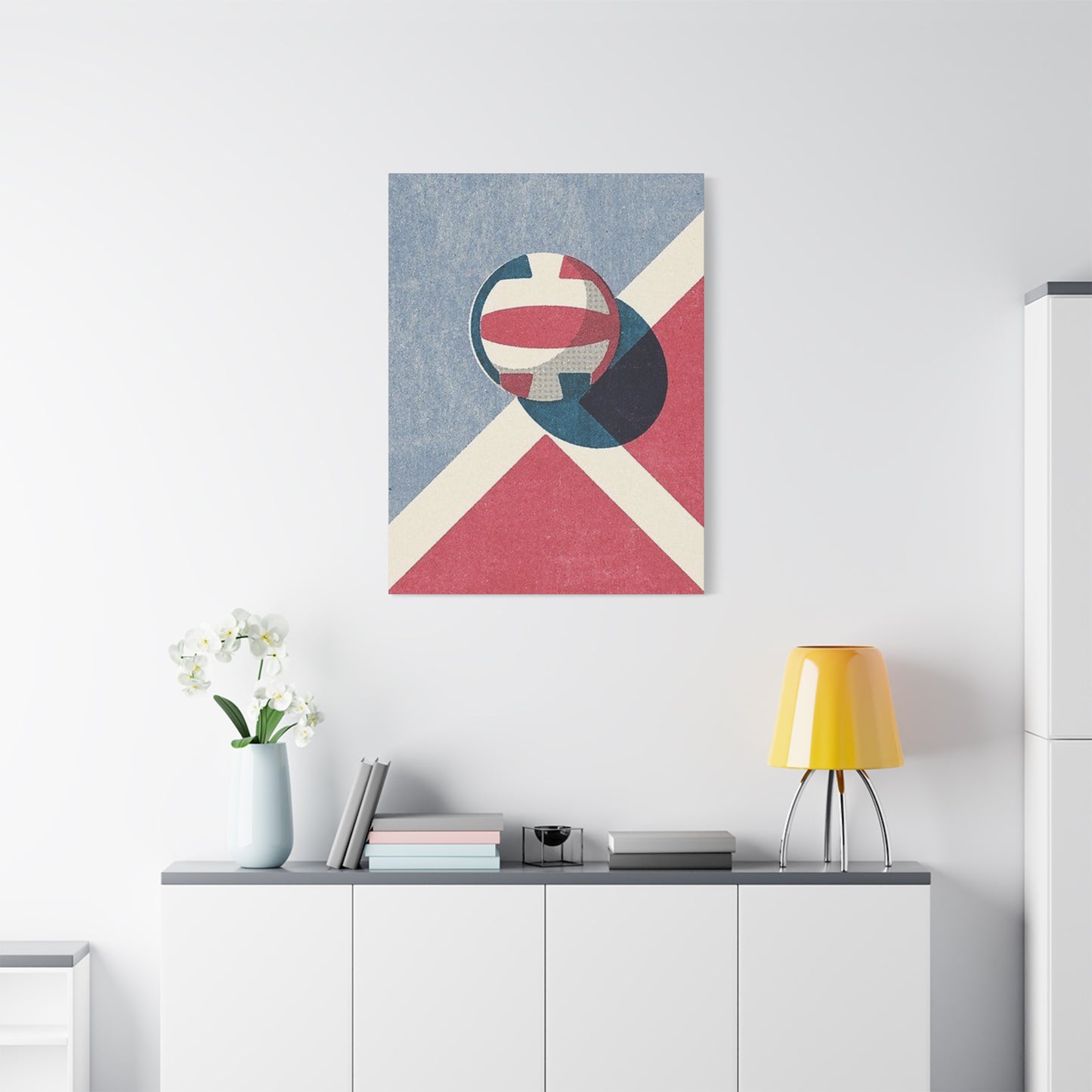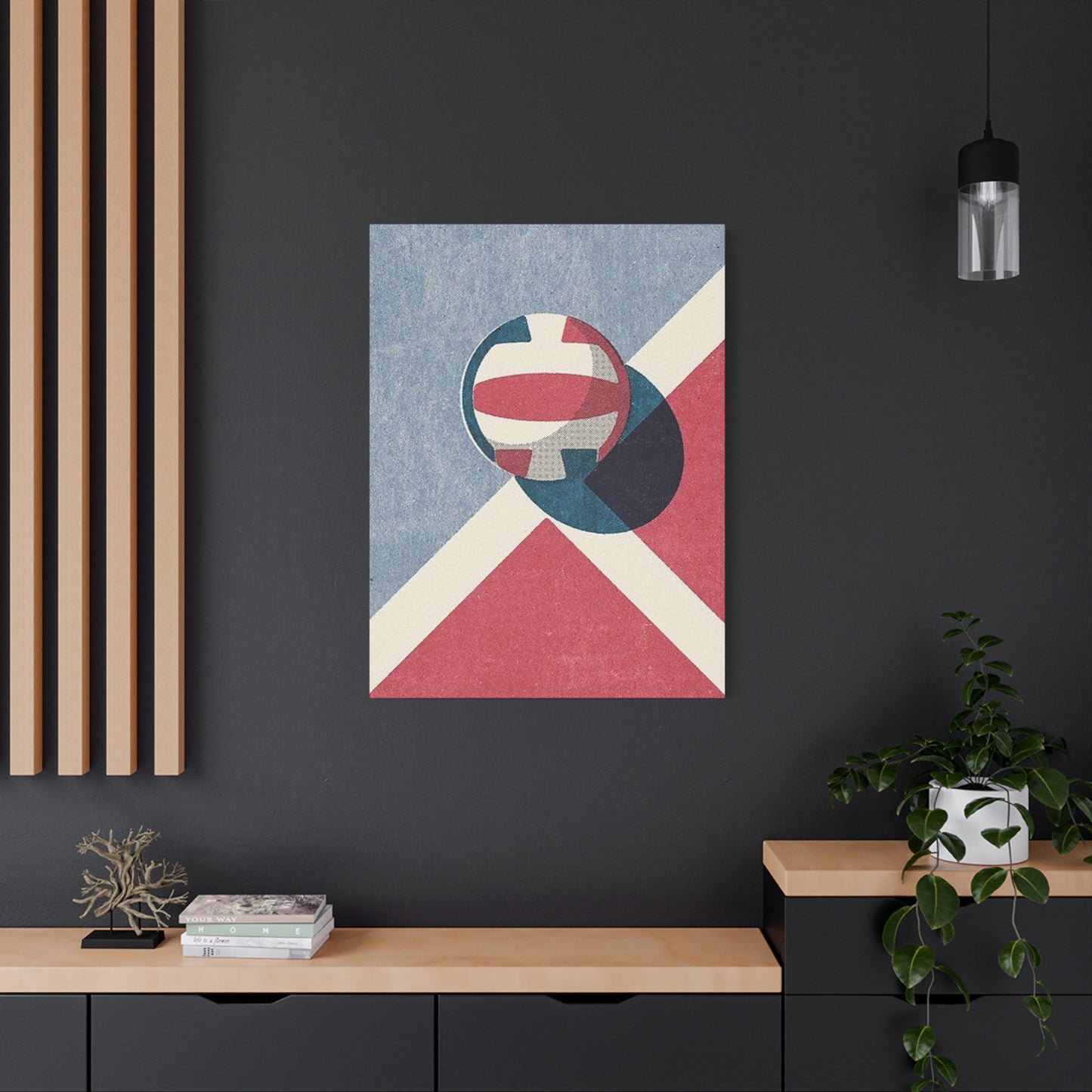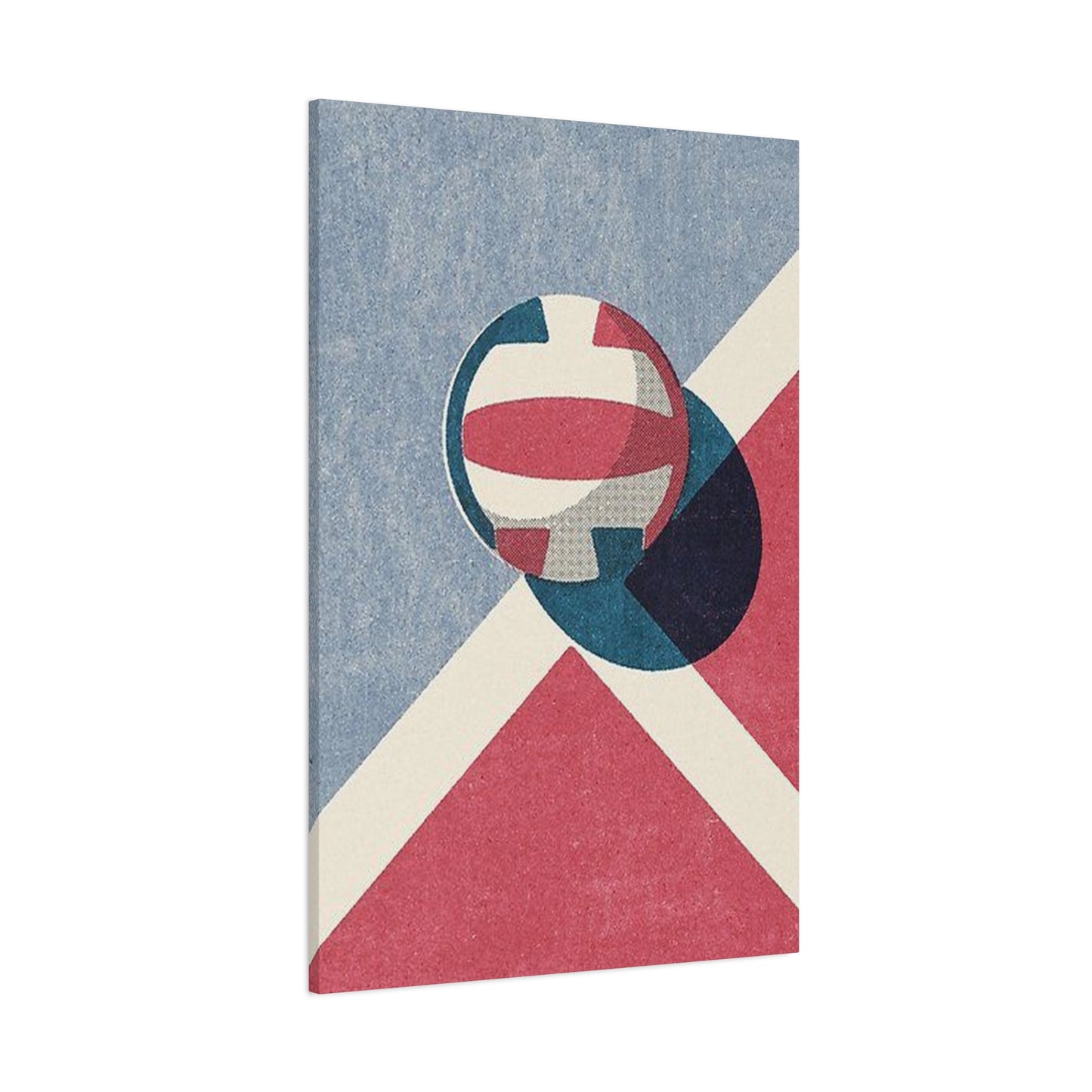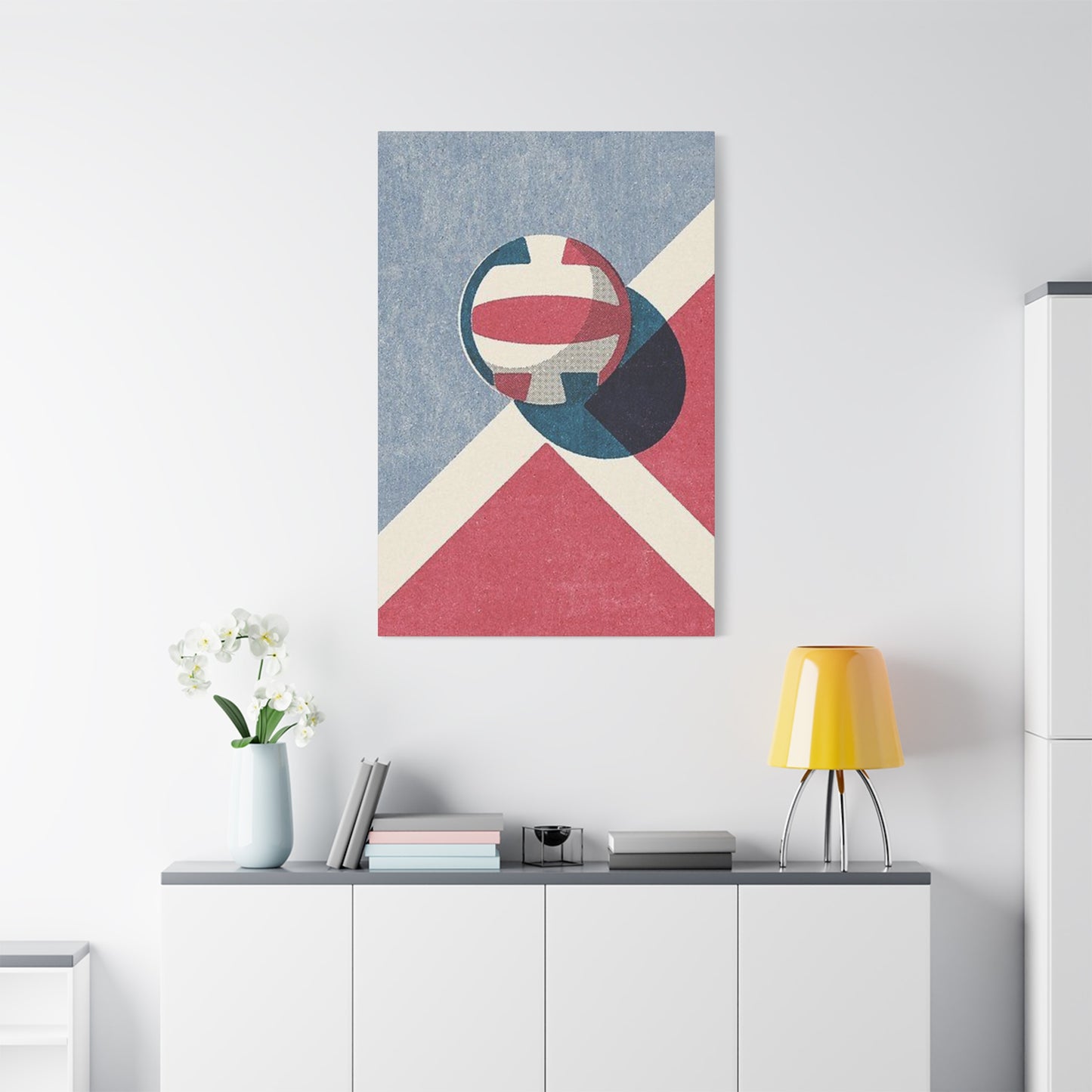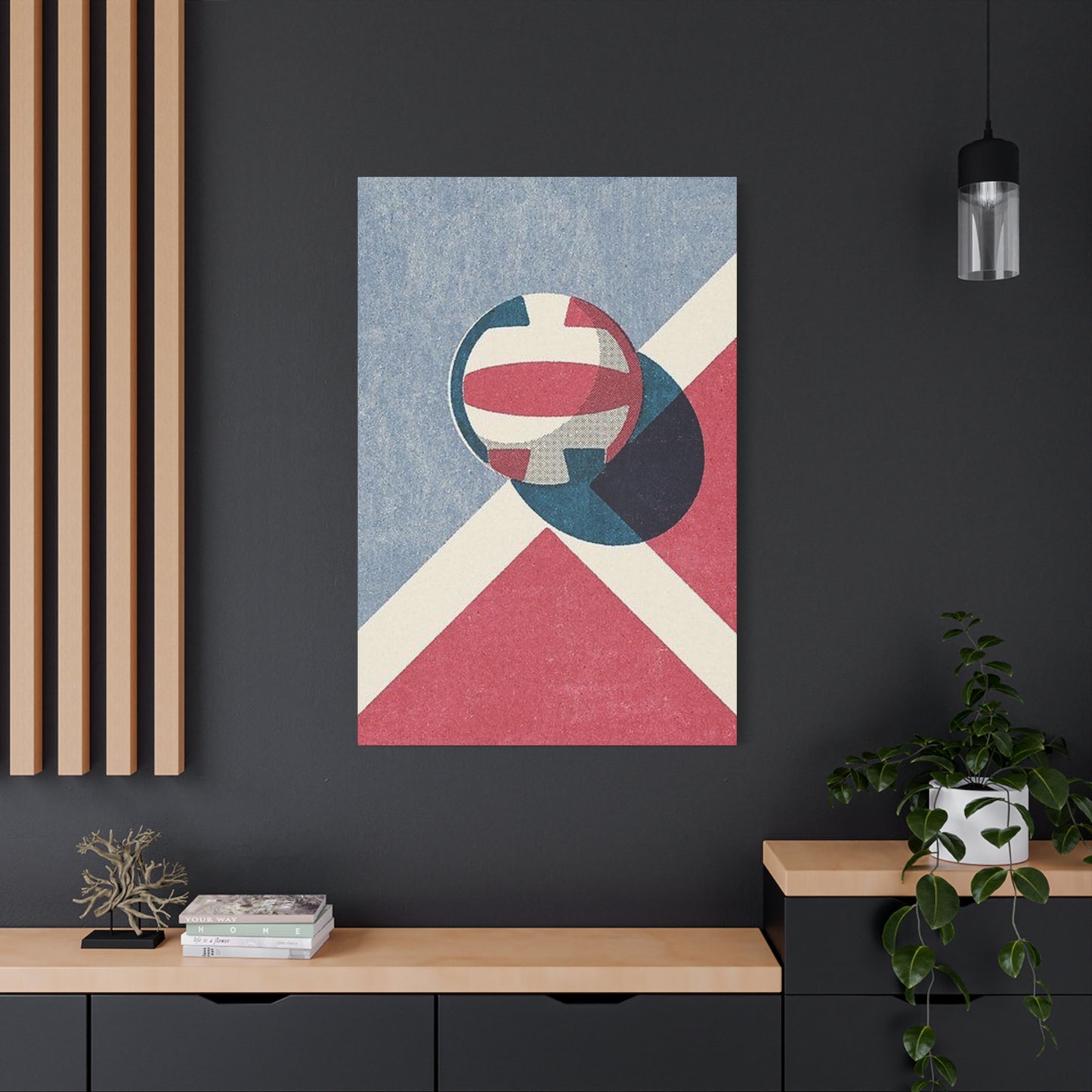Spherical Wall Art: Creative Ball Poster Designs for Contemporary Interior Spaces
The world of interior design continues to evolve with innovative approaches to wall decoration, and spherical artwork has emerged as a captivating trend that combines geometric precision with artistic expression. Ball poster designs have revolutionized how we perceive and utilize wall space, offering endless possibilities for creating visually striking environments that reflect personal style and contemporary aesthetics.
Modern interior spaces demand artwork that serves both functional and aesthetic purposes, and spherical wall art delivers on both fronts. These designs range from simple geometric forms to complex artistic interpretations that challenge perception and create focal points within any room. The versatility of ball poster art allows homeowners, designers, and business owners to incorporate these elements into various design schemes while maintaining cohesion and visual interest.
The appeal of spherical artwork lies in its fundamental geometric properties and the psychological responses these shapes evoke. Circles and spheres represent completeness, unity, and harmony in many cultures, making them ideal choices for spaces intended to promote relaxation, creativity, or productivity. When translated into poster format, these shapes become accessible design elements that can transform ordinary walls into extraordinary visual experiences.
Contemporary design trends increasingly favor clean lines, geometric patterns, and meaningful artistic expression. Ball poster art satisfies all these requirements while offering unique opportunities for customization and personalization. Whether displayed individually as statement pieces or arranged in carefully curated collections, these designs provide the flexibility needed to adapt to changing interior trends and personal preferences.
The manufacturing and printing technologies available today enable artists and designers to create ball poster art with unprecedented detail, color accuracy, and durability. Digital printing processes allow for vibrant color reproduction, while various paper stocks and finishing options provide texture and visual depth that enhance the overall impact of the artwork. These technological advances have democratized access to high-quality spherical wall art, making it possible for anyone to incorporate these designs into their living or working spaces.
Dynamic Motion in Ball Poster Art
Movement and energy become tangible elements when incorporated into spherical poster designs, creating artwork that appears to pulse with life and vitality. Dynamic motion in ball poster art represents a sophisticated approach to wall decoration that goes beyond static imagery to engage viewers on multiple sensory levels. These designs utilize various artistic techniques to suggest movement, rotation, speed, and transformation within the confines of a two-dimensional medium.
The concept of dynamic motion in spherical artwork draws inspiration from physics, astronomy, and kinetic art movements. Artists create the illusion of spinning spheres, bouncing balls, or objects in orbital motion through careful manipulation of visual elements such as blur effects, trailing lines, particle systems, and gradient transitions. These techniques transform simple circular forms into complex visual narratives that tell stories of energy, momentum, and continuous change.
Color plays a crucial role in establishing dynamic motion within ball poster art. Warm colors such as reds, oranges, and yellows naturally suggest energy and movement, while cooler blues and purples can create the impression of flowing or floating motion. Artists often employ color gradients that shift from one hue to another, creating the visual sensation of objects moving through space or changing states. The strategic use of complementary colors can enhance the perception of vibration and oscillation within the spherical forms.
Lighting effects contribute significantly to the dynamic quality of these poster designs. Artists simulate various lighting conditions, from dramatic spotlights that create stark shadows and highlights to soft ambient illumination that suggests gentle movement. Lens flares, light trails, and reflective surfaces within the spherical objects add layers of complexity that make the artwork appear to generate its own illumination and energy.
The arrangement of multiple spheres within a single composition offers additional opportunities to create dynamic motion effects. Artists might depict spheres of varying sizes moving in formation, creating patterns that suggest choreographed movement or natural phenomena such as planetary orbits or molecular structures. The spacing, overlap, and interaction between spheres contribute to the overall sense of dynamism and flow within the composition.
Background elements in dynamic ball poster art serve to enhance rather than distract from the primary spherical subjects. Motion blur, speed lines, particle effects, and abstract patterns in the background reinforce the sense of movement while maintaining focus on the spherical elements. These background treatments often employ techniques borrowed from photography and digital art to create realistic motion effects that convince the eye of actual movement.
The scale and proportion of spherical elements within dynamic motion posters affect how viewers perceive the energy and movement of the composition. Larger spheres might appear to move more slowly and deliberately, while smaller spheres can suggest rapid, energetic motion. Artists manipulate these perceptions to create specific emotional responses and to guide the viewer's attention through the composition in predetermined patterns.
Texture application in dynamic ball poster art adds another dimension to the movement illusion. Smooth, reflective surfaces suggest fluid motion and grace, while rough or textured surfaces might imply more aggressive or chaotic movement patterns. The interplay between different surface treatments within a single composition creates visual interest and helps establish hierarchy among the various spherical elements.
Typography and textual elements, when included in dynamic ball poster designs, must complement rather than compete with the motion effects. Fonts that suggest speed or movement, such as italic or slanted typefaces, work well with these designs. Text placement requires careful consideration to ensure that words appear to flow with the overall movement of the composition rather than disrupting the visual flow.
Dynamic motion ball posters find particular application in spaces where energy and vitality are desired. Fitness centers, creative studios, modern offices, and entertainment spaces benefit from the energizing effects of these designs. The psychological impact of perceived motion can stimulate creativity, encourage physical activity, and create an atmosphere of progress and forward momentum.
The production considerations for dynamic motion ball poster art require attention to printing quality and viewing distance. Fine details that contribute to motion effects must remain crisp and clear when printed at various sizes. Color accuracy becomes crucial when gradients and lighting effects are essential to the motion illusion. Professional printing services with experience in reproducing complex digital artwork ensure that the final product maintains the intended dynamic impact.
Installation and display options for dynamic motion ball posters should consider the viewing angle and lighting conditions of the intended space. These artworks often benefit from even lighting that doesn't create competing shadows or reflections. The height and positioning of the artwork should allow viewers to appreciate the motion effects without strain or distortion.
Gradient Sphere Posters for Modern Walls
The sophisticated use of gradient techniques in spherical poster art represents a marriage between mathematical precision and artistic intuition, creating wall decorations that appeal to contemporary sensibilities while maintaining timeless geometric appeal. Gradient sphere posters utilize smooth color transitions to create depth, dimension, and visual interest that transforms flat wall surfaces into windows of infinite possibility.
Modern gradient techniques in spherical artwork draw from both traditional artistic methods and cutting-edge digital design capabilities. Artists layer multiple color gradients to create complex lighting scenarios that suggest three-dimensional form within two-dimensional space. These gradients might radiate outward from central points, creating the illusion of illuminated spheres, or flow in linear patterns that suggest environmental lighting conditions affecting the spherical objects.
The color theory behind effective gradient sphere posters requires deep understanding of how colors interact and transition naturally. Successful gradients avoid abrupt changes that break the illusion of smooth surfaces, instead employing subtle shifts that guide the eye around the spherical form. Artists often study natural phenomena such as soap bubbles, planets, and polished metal spheres to understand how light interacts with curved surfaces in real-world conditions.
Monochromatic gradient schemes in sphere posters offer elegant simplicity that complements minimalist interior design approaches. These designs might transition from deep shadows to bright highlights using variations of a single hue, creating sophisticated artwork that provides visual interest without overwhelming other design elements in the space. The subtlety of monochromatic gradients makes them ideal for professional environments where understated elegance is preferred.
Multicolored gradient sphere posters embrace the full spectrum of color possibilities, creating vibrant artwork that serves as focal points in contemporary spaces. These designs might transition through rainbow spectrums, complementary color pairs, or carefully selected triadic color schemes. The challenge in multicolored gradient work lies in maintaining harmony while providing enough contrast to create visual excitement and depth.
The technical execution of gradient sphere posters requires precise control over color transitions and blending techniques. Digital artists employ various software tools and techniques to achieve smooth gradients that print accurately across different media and sizes. The mathematical precision required to create convincing spherical gradients often involves complex calculations that take into account light source positions, surface properties, and viewing angles.
Metallic and iridescent effects in gradient sphere posters add luxury and sophistication to modern wall displays. These effects simulate the appearance of polished metals, pearls, or oil slicks, creating surfaces that appear to change color depending on viewing angle and lighting conditions. The implementation of these effects requires specialized printing techniques or metallic inks that add cost but significantly enhance the visual impact of the artwork.
Background integration in gradient sphere posters requires careful balance to ensure that the spherical elements remain the primary focus while the surrounding space enhances rather than competes with the main subjects. Subtle background gradients that complement the sphere colors create depth and atmosphere, while stark contrasts can make spheres appear to float in undefined space. The choice depends on the intended aesthetic impact and the characteristics of the installation space.
Size scalability represents an important consideration in gradient sphere poster design. Gradients that appear smooth and convincing at small sizes might reveal banding or other printing artifacts when enlarged significantly. Artists must create their gradient work at sufficiently high resolution and test printing at various sizes to ensure consistent quality across different applications.
The psychological effects of gradient sphere posters contribute to their popularity in therapeutic and wellness environments. The smooth color transitions and perfect geometric forms create calming effects that can reduce stress and promote relaxation. Color psychology principles suggest that certain gradient combinations can evoke specific emotional responses, making these designs valuable tools for creating desired atmospheric conditions in various spaces.
Lighting considerations for gradient sphere poster display significantly impact their visual effectiveness. Natural lighting conditions change throughout the day, potentially altering the perceived colors and contrasts within the gradient work. Artificial lighting systems should provide even illumination that doesn't create competing gradients or color casts that interfere with the intended appearance of the artwork.
The versatility of gradient sphere posters makes them suitable for various interior design styles, from ultra-modern minimalist spaces to more traditional environments seeking contemporary accent pieces. The key lies in selecting gradient color schemes that complement existing color palettes while providing sufficient contrast to create visual interest and depth.
Production quality standards for gradient sphere posters must address the challenges of reproducing smooth color transitions accurately across different printing technologies and media. Professional printing services employ color management systems and calibrated equipment to ensure that gradients appear as intended by the artist. The choice of paper stock and finishing options can significantly affect the final appearance of gradient work, with some materials enhancing the smoothness of transitions while others might introduce unwanted texture or color shifts.
Conceptual Ball Posters with Meaning
The integration of symbolic meaning into spherical poster art elevates these designs from mere decorative elements to powerful communication tools that convey complex ideas, emotions, and philosophical concepts. Conceptual ball posters with meaning transform simple geometric forms into vehicles for storytelling, cultural commentary, and personal expression that resonates with viewers on intellectual and emotional levels.
Symbolic interpretation of spherical forms draws from diverse cultural, religious, and philosophical traditions that assign meaning to circular and spherical shapes. In many cultures, circles represent wholeness, completeness, and the cyclical nature of life, while spheres might symbolize perfection, unity, or cosmic harmony. Artists working in conceptual ball poster design tap into these deep-rooted associations while adding contemporary interpretations that speak to modern audiences.
Environmental consciousness finds powerful expression through conceptual ball poster art that depicts Earth-like spheres or represents ecological themes through color choices, surface treatments, and compositional elements. These designs might show pristine natural spheres contrasted with polluted or damaged versions, creating visual narratives about environmental stewardship and climate change. The universal recognition of spherical Earth imagery makes these concepts immediately accessible to diverse audiences.
Social and political commentary through spherical artwork offers artists opportunities to address complex issues through metaphorical representation. Spheres might represent social bubbles, economic systems, or political divisions, with visual treatments that suggest isolation, conflict, or unity depending on the intended message. The abstract nature of spherical forms allows for nuanced commentary that invites interpretation while avoiding overly literal or confrontational imagery.
Philosophical concepts such as infinity, perfection, and the nature of existence find natural expression through spherical forms that appear to contain infinite depth or suggest endless continuation beyond the frame boundaries. Artists might create series of conceptual ball posters that explore themes of consciousness, reality, and human perception through varying interpretations of spherical imagery that challenge viewers to consider fundamental questions about existence and meaning.
Personal growth and transformation themes utilize the sphere as a symbol of completion and self-realization. Conceptual designs might show spheres in various states of formation, suggesting the process of personal development or the journey toward achieving one's full potential. Color progressions, texture changes, and compositional arrangements reinforce these themes while creating visually compelling artwork that inspires and motivates viewers.
Cultural diversity and unity concepts benefit from the universal appeal of spherical forms that transcend linguistic and cultural barriers. Artists create conceptual ball posters that celebrate multiculturalism through color combinations representing different cultures, surface patterns inspired by traditional arts, or compositional arrangements that suggest harmony among diverse elements. These designs promote understanding and appreciation of cultural differences while emphasizing common human experiences.
Temporal concepts including past, present, and future find representation through spherical imagery that suggests the continuity of time or the cyclical nature of historical events. Artists might create series that show spheres in different states of aging, decay, or renewal, or use color progressions that suggest the passage of time. These conceptual approaches invite viewers to contemplate their place in the temporal continuum and their relationship with history and futurity.
Spiritual and meditative themes naturally align with spherical forms that suggest completeness and transcendence. Conceptual ball posters designed for spiritual spaces might incorporate sacred geometry principles, color combinations associated with chakras or energy centers, or compositional arrangements that promote contemplation and inner reflection. These designs serve both aesthetic and functional purposes in creating environments conducive to spiritual practice and personal reflection.
Scientific and mathematical concepts find expression through spherical artwork that explores geometric relationships, physical laws, or cosmic phenomena. Artists might create conceptual designs that visualize complex scientific ideas through spherical metaphors, making abstract concepts more accessible and engaging. These educational aspects add intellectual value to the aesthetic appeal of the artwork.
Emotional expression through conceptual ball poster art allows artists to convey complex feelings and psychological states through color choices, surface treatments, and compositional arrangements. Spheres might appear to pulse with emotion, fragment under pressure, or merge with other forms to suggest relationships and connections. The abstract nature of these expressions allows viewers to project their own experiences and interpretations onto the artwork.
The development process for conceptual ball posters requires extensive research and conceptual development to ensure that the intended meanings translate effectively through visual elements. Artists must balance symbolic content with aesthetic appeal, ensuring that the artwork functions successfully on both intellectual and emotional levels. This process often involves multiple iterations and feedback from target audiences to refine the conceptual messaging.
Documentation and artist statements play important roles in conceptual ball poster art, providing viewers with context and insight into the intended meanings and interpretations. These textual accompaniments help bridge the gap between artistic intention and viewer perception, enhancing the educational and emotional impact of the artwork while respecting the viewer's right to individual interpretation.
The installation context for conceptual ball posters significantly affects their ability to communicate intended meanings effectively. Healthcare facilities might benefit from designs that promote healing and hope, while educational institutions could display artwork that encourages learning and growth. Corporate environments might feature conceptual designs that reflect company values or industry themes, creating branded environments that reinforce organizational culture and mission.
Oversized Ball Prints as Statement Decor
The strategic use of large-format spherical artwork creates powerful visual anchors that define spaces and establish design hierarchies within contemporary interiors. Oversized ball prints as statement decor go beyond conventional artwork dimensions to create immersive experiences that transform walls into architectural features and establish dominant visual themes throughout entire rooms or commercial spaces.
Scale psychology plays a crucial role in the impact of oversized ball prints, as large-format artwork naturally commands attention and establishes itself as the primary visual element within a space. The human eye is naturally drawn to large objects, and when these objects possess the perfect symmetry and balance of spherical forms, they create compelling focal points that organize and anchor all other design elements within the viewing area.
Architectural integration of oversized ball prints requires careful consideration of room proportions, ceiling heights, and sight lines to ensure that the artwork enhances rather than overwhelms the space. Large spherical designs can make small rooms appear larger by creating depth perception through dimensional illusion, while in expansive spaces, they provide necessary visual weight to prevent the area from feeling empty or undefined.
The production challenges of oversized ball prints demand specialized printing equipment, premium materials, and expert finishing techniques to maintain image quality and structural integrity at large scales. High-resolution source files become essential to prevent pixelation or loss of detail, while color management systems ensure consistent reproduction across the entire print surface. Professional mounting and installation systems provide the structural support necessary for safe and secure display of large-format artwork.
Color impact intensifies dramatically when spherical designs are enlarged to statement proportions. Colors that appear subtle at smaller scales can become bold and commanding when expanded, requiring artists to adjust their palette choices and intensity levels accordingly. The psychological effects of color also amplify with scale, making color selection crucial for achieving desired emotional responses and atmospheric conditions within the space.
Lighting design for oversized ball prints requires professional planning to ensure even illumination across the entire surface while avoiding hot spots, shadows, or reflective glare that could compromise viewing quality. Track lighting systems, wall washers, or integrated LED solutions provide the flexibility needed to illuminate large-format artwork effectively while maintaining the ability to adjust for different viewing conditions and times of day.
Material selection for oversized ball prints affects both the visual appearance and practical considerations of installation and maintenance. Canvas prints offer texture and traditional artistic appeal but may require specialized mounting systems, while metal prints provide durability and vibrant color reproduction with contemporary aesthetic appeal. Paper-based prints on premium stocks offer superior detail reproduction but may require protective glazing or framing systems.
The economic considerations of oversized ball prints include not only the higher production costs associated with large-format printing but also the specialized installation requirements and potential need for custom mounting solutions. However, the dramatic visual impact and transformative effect on interior spaces often justify the investment, particularly in commercial environments where impressive visual statements contribute to brand image and customer experience.
Spatial planning for oversized ball prints must account for viewing distances that allow observers to appreciate both the overall composition and the fine details within the artwork. The optimal viewing distance typically ranges from 1.5 to 3 times the width of the artwork, requiring careful consideration of room layout and furniture placement to ensure unobstructed sight lines and comfortable viewing angles.
Thematic coherence becomes increasingly important with oversized ball prints, as their dominant presence within a space requires that their design themes align closely with the overall interior concept. Contradictory or conflicting themes become more noticeable at large scales, making it essential to select designs that reinforce rather than compete with existing design elements.
The versatility of oversized ball prints allows them to function effectively in various commercial and residential applications. Corporate lobbies benefit from the impressive scale and sophisticated appearance of large spherical artwork, while residential spaces can use oversized prints to create gallery-like environments that showcase artistic appreciation and design sophistication.
Maintenance and care of oversized ball prints require specialized knowledge and equipment due to their size and the difficulty of removing them for cleaning or repair. Regular dusting with appropriate tools and techniques becomes essential to maintain appearance, while protective measures such as UV filtering glazing or specialized coatings help prevent fading and deterioration over time.
The installation process for oversized ball prints often requires professional services with experience in large-format artwork handling and mounting. Proper wall preparation, structural assessment, and installation hardware selection ensure safe and secure mounting that can support the weight and dimensions of large prints while providing stable, long-term display capability.
Transportation and delivery considerations for oversized ball prints may require special handling, packaging, and shipping arrangements to prevent damage during transit. Roll shipping for flexible materials or custom crating for rigid prints adds complexity and cost but ensures that artwork arrives in perfect condition ready for installation.
The transformative power of oversized ball prints extends beyond mere decoration to architectural enhancement, creating visual landmarks within interior spaces that improve navigation, establish identity, and enhance the overall user experience. In commercial environments, these statement pieces contribute to brand recognition and memory formation, while in residential settings, they create personalized environments that reflect individual taste and artistic appreciation.
Neon Ball Poster Wall Designs
The integration of neon aesthetic principles into spherical poster art creates vibrant, energetic wall designs that capture the electric atmosphere of urban nightlife and contemporary digital culture. Neon ball poster wall designs combine the timeless appeal of geometric forms with the cutting-edge visual language of fluorescent lighting, creating artwork that glows with synthetic energy and commands attention through bold color choices and luminous effects.
Color palette development for neon ball posters draws inspiration from traditional neon tube colors while expanding into contemporary fluorescent and electric hues that achieve similar visual impact through print media. Classic neon colors including electric blue, hot pink, lime green, and brilliant white form the foundation of these designs, while modern additions such as cyber purple, acid yellow, and plasma orange extend the palette to encompass digital-age aesthetics.
The illusion of luminosity in printed neon ball posters requires sophisticated understanding of color theory, contrast relationships, and visual perception principles. Artists simulate the glowing effect of actual neon through careful selection of background colors that enhance the apparent brightness of the spherical elements, strategic use of halation effects that suggest light bleeding beyond the sphere boundaries, and color saturation levels that maximize visual impact without sacrificing print reproduction quality.
Background treatment in neon ball poster designs typically employs dark or black backgrounds that enhance the apparent luminosity of the spherical elements, mimicking the nighttime conditions in which actual neon signs achieve their maximum visual impact. These dark backgrounds serve multiple functions, providing contrast that makes colors appear more vivid, suggesting the urban environment associated with neon aesthetics, and creating the impression of spheres floating in dark space or glowing against city skylines.
Typography integration in neon ball poster designs requires careful consideration of font choices and text treatments that complement the electric aesthetic without competing with the primary spherical elements. Fonts that suggest technological themes, such as sans-serif typefaces with geometric construction or custom lettering that mimics the angular bends of neon tubes, work effectively with these designs. Text treatments might include glow effects, outline styles, or gradient fills that suggest illumination and maintain consistency with the neon theme.
The technical challenges of reproducing neon effects through print media require specialized knowledge of color gamut limitations and printing processes. Traditional printing methods cannot reproduce the actual luminosity of neon lighting, necessitating creative approaches that suggest rather than literally recreate the neon experience. Fluorescent inks, metallic accents, and specialized finishing techniques can enhance the neon illusion, while careful color management ensures that the electric quality of the colors translates effectively from screen to print.
Compositional arrangements in neon ball poster designs often reference urban signage patterns and commercial advertising layouts while adapting these influences to purely artistic applications. Multiple spheres might be arranged to suggest neon sign letters or symbols, creating abstract compositions that maintain the commercial advertising aesthetic while functioning as fine art installations. The rhythmic placement of spherical elements can create visual patterns that suggest the pulsing or animated effects common in actual neon displays.
Cultural associations with neon aesthetics influence the reception and interpretation of neon ball poster designs. The connection to nightlife, entertainment districts, and urban culture creates associations with energy, excitement, and contemporary living that appeal to audiences seeking to incorporate these qualities into their interior environments. These cultural connections make neon ball posters particularly suitable for entertainment spaces, modern restaurants, creative studios, and residential areas where energetic atmospheres are desired.
The historical context of neon art and its evolution from commercial signage to fine art provides depth and legitimacy to contemporary neon ball poster designs. Understanding the artistic movements that elevated neon from purely commercial applications to gallery-worthy art forms helps inform design decisions and provides context for viewers who appreciate the medium's cultural significance and artistic heritage.
Installation considerations for neon ball poster designs should account for the intended lighting conditions and viewing environments that will affect the perceived brightness and color accuracy of the artwork. These designs often benefit from dimmer ambient lighting that allows the printed colors to achieve maximum perceived luminosity, while bright daylight conditions might diminish the neon effect and require different display strategies or supplementary lighting systems.
The psychological effects of neon ball poster designs include stimulation, energy enhancement, and mood elevation associated with bright, saturated colors and electric aesthetics. These effects make neon designs particularly valuable in environments where motivation, creativity, and positive energy are desired, while potentially making them less suitable for spaces intended for relaxation or contemplation.
Market applications for neon ball poster designs span both commercial and residential sectors, with particular strength in businesses seeking to create energetic, contemporary environments. Fitness centers, entertainment venues, modern offices, and retail spaces benefit from the attention-grabbing qualities of neon aesthetics, while residential applications might focus on accent walls, home theaters, or creative workspace areas.
The evolution of neon ball poster designs continues to incorporate influences from digital art, cyber culture, and virtual reality aesthetics, expanding the traditional neon palette and effects to include new color combinations and visual treatments that reflect contemporary technological themes. These evolutionary developments ensure that neon ball poster art remains relevant and appealing to audiences familiar with digital and virtual environments.
Printing specifications for neon ball poster designs require careful attention to color profiles, paper selection, and finishing options that maximize the electric visual impact while maintaining durability and quality. Glossy finishes can enhance color vibrancy and create reflective properties that suggest luminosity, while matte finishes might be preferred in environments where glare reduction is important for comfortable viewing.
Minimalist Circle & Ball Posters
The philosophy of minimalism finds perfect expression through spherical poster art that emphasizes simplicity, space, and the inherent beauty of basic geometric forms. Minimalist circle and ball posters strip away unnecessary elements to focus attention on essential qualities of shape, proportion, and spatial relationships, creating wall art that achieves maximum impact through careful reduction rather than elaborate addition.
Design principles in minimalist spherical artwork prioritize negative space as an active design element rather than merely empty area around the subject matter. The careful balance between positive spherical forms and negative background space creates tension and visual interest that engages viewers without overwhelming them. This approach requires precise judgment in determining optimal sphere sizes, positions, and relationships within the overall composition.
Color restraint in minimalist circle and ball posters typically involves limited palettes that might include only two or three colors, monochromatic schemes, or even pure black and white compositions. The limited color range forces viewers to focus on form, proportion, and spatial relationships rather than being distracted by complex color interactions. When color is employed, each hue carries significant weight and must be selected with careful consideration of its psychological impact and relationship to other elements.
The role of proportion and scale in minimalist spherical designs becomes crucial when other visual elements are reduced to essential components. Small variations in sphere sizes, spacing, or positioning can dramatically affect the overall balance and visual harmony of the composition. Artists working in this style must develop sensitivity to subtle proportional relationships that create pleasing visual experiences without relying on complex or decorative elements.
Typography in minimalist circle and ball posters, when included at all, must complement the reductive aesthetic while providing necessary information or commentary. Font choices typically favor clean, geometric typefaces that echo the spherical forms without competing for visual attention. Text placement requires careful consideration to maintain the overall balance and simplicity of the composition while ensuring legibility and appropriate hierarchy.
The philosophical underpinnings of minimalist design extend beyond mere aesthetic choices to embrace concepts of essentialism, mindfulness, and intentional living that resonate with contemporary audiences seeking simplicity in increasingly complex world environments. Minimalist circle and ball posters can serve as visual reminders of these values while creating calm, uncluttered environments that promote focus and contemplation.
Production considerations for minimalist spherical artwork often focus on material quality and printing precision rather than complex effects or elaborate finishing techniques. The reduced visual complexity makes any flaws or imperfections more noticeable, requiring higher standards for color accuracy, edge definition, and surface quality. Premium papers and professional printing services become essential investments in achieving the pristine appearance that minimalist design demands.
The versatility of minimalist circle and ball posters makes them suitable for wide range of interior design styles and applications. Their neutral, unobtrusive nature allows them to complement existing decor without creating visual conflicts, while their sophisticated simplicity adds contemporary appeal to both traditional and modern environments. This adaptability makes minimalist designs valuable choices for spaces that may undergo design changes over time.
Viewing experience of minimalist spherical artwork differs significantly from more complex designs, as the reduced visual information requires viewers to engage more contemplatively with the artwork. The absence of distracting elements allows for deeper appreciation of subtle qualities such as color nuances, proportional relationships, and spatial tensions that might be overlooked in busier compositions.
The challenge of creating compelling minimalist circle and ball posters lies in achieving visual interest and emotional engagement through extremely limited means. Artists must rely on fundamental design principles and their understanding of human perception to create compositions that appear effortless while actually requiring sophisticated design sensibilities and careful execution.
Cultural context for minimalist design varies significantly across different societies, with some cultures naturally embracing simplicity and others preferring more elaborate visual expressions. Understanding these cultural preferences helps inform decisions about where and how to implement minimalist circle and ball posters for maximum acceptance and appreciation.
The economic advantages of minimalist circle and ball posters include reduced production complexity, fewer color requirements, and simplified printing processes that can result in lower costs without sacrificing visual impact. These cost efficiencies make minimalist designs accessible to broader audiences while maintaining professional appearance standards.
Installation and display of minimalist circle and ball posters requires attention to environmental factors that might compete with or complement the simplified aesthetic. Clean, uncluttered wall surfaces enhance the minimalist effect, while busy or ornate surroundings might diminish the impact of reductive design approaches. Lighting should be even and unobtrusive to maintain the serene quality associated with minimalist aesthetics.
The educational value of minimalist circle and ball posters extends to teaching viewers about fundamental design principles, spatial relationships, and the power of restraint in visual communication. These designs can serve as examples of how maximum impact can be achieved through careful reduction rather than elaborate addition, providing lessons applicable to various design disciplines and creative endeavors.
Maintenance requirements for minimalist circle and ball posters are typically minimal due to their simple composition and lack of complex elements that might require special care. However, the pristine appearance essential to minimalist aesthetics demands regular cleaning and protection from environmental factors that might compromise the clean, uncluttered appearance that defines this design approach.
Artistic Ball Posters for Bedrooms
The intimate nature of bedroom environments requires wall art that promotes relaxation, personal expression, and peaceful atmospheres while maintaining aesthetic appeal and design coherence. Artistic ball posters for bedrooms combine the calming properties of spherical forms with color palettes, themes, and artistic treatments specifically chosen to enhance sleep quality, reduce stress, and create personal sanctuaries that reflect individual taste and promote well-being.
Color psychology plays a fundamental role in bedroom-specific artistic ball poster design, as different colors directly affect mood, energy levels, and sleep patterns. Cool colors such as soft blues, gentle greens, and muted purples naturally promote relaxation and are associated with tranquility and rest. Warm colors might be used sparingly as accents or in very muted tones to avoid overstimulation that could interfere with sleep preparation and quality.
The size and scale considerations for bedroom artistic ball posters must account for typical viewing distances and the proportional relationship to furniture and architectural features. Bedroom viewing often occurs from bed level while lying down, requiring careful consideration of artwork height and angle to ensure comfortable viewing without neck strain. Multiple smaller pieces might be preferable to single large installations to maintain appropriate scale relationships within more intimate spaces.
Artistic styles appropriate for bedroom ball poster applications tend toward softer, more contemplative approaches rather than dynamic or energetic treatments. Watercolor effects, soft gradients, dreamy atmospheric treatments, and gentle artistic techniques create soothing visual experiences that complement the restful purpose of bedroom spaces. Abstract interpretations allow for personal projection and imagination while maintaining the peaceful qualities essential to bedroom environments.
The integration of personal meaning and symbolism in bedroom artistic ball posters creates deeper emotional connections between residents and their private spaces. Spherical forms might represent personal growth, completeness, harmony, or other concepts that hold special significance for individuals. Custom color combinations, size arrangements, or accompanying elements can personalize these designs to reflect unique preferences and create truly individualized bedroom environments.
Lighting considerations for bedroom artistic ball posters must accommodate various illumination scenarios from bright daylight through evening ambiance to nighttime conditions. The artwork should appear attractive under all lighting conditions while not creating reflective glare that might disturb sleep or relaxation. Matte finishes often work better in bedrooms than glossy treatments that might create unwanted reflections from bedside lamps or window light.
The therapeutic potential of artistic ball posters in bedroom settings extends beyond mere decoration to include stress reduction, meditation support, and sleep enhancement. The geometric perfection and balanced proportions of spherical forms can provide focal points for breathing exercises, meditation practice, or simply peaceful contemplation before sleep. Color combinations chosen for their calming properties contribute to the overall therapeutic environment.
Durability and maintenance considerations for bedroom artistic ball posters should account for the relatively gentle environment of bedroom spaces while ensuring longevity and continued appeal. Bedrooms typically experience less extreme temperature and humidity variations than other areas of the home, potentially extending the life of paper-based artworks. However, protection from direct sunlight streaming through windows remains important for preventing fading and deterioration.
The positioning and arrangement of artistic ball posters within bedroom spaces requires sensitivity to furniture placement, traffic patterns, and sight lines from various positions within the room. Wall space above headboards provides natural focal points, while areas visible from seating or dressing areas offer secondary display opportunities. The goal is creating cohesive visual experiences that enhance rather than compete with the functional requirements of bedroom spaces.
Cultural and personal associations with spherical imagery can influence the selection of artistic ball posters for bedroom applications. Some individuals might prefer designs that reference natural phenomena such as moons, planets, or bubbles, while others might favor more abstract geometric interpretations. Understanding these preferences helps ensure that bedroom artwork contributes positively to the personal sanctuary that bedrooms represent.
The coordination of artistic ball posters with existing bedroom decor requires consideration of color schemes, style themes, and overall design direction. The artwork should complement bedding, window treatments, furniture finishes, and other decorative elements while providing visual interest and personality. Neutral color palettes in artwork offer flexibility for changing other bedroom elements over time without requiring artwork replacement.
Privacy considerations unique to bedroom environments might influence the selection of artistic ball poster themes and imagery. Some individuals prefer abstract or non-representational designs that maintain personal privacy while others might choose imagery that reflects personal interests or beliefs. The intimate nature of bedrooms gives residents complete freedom to select artwork that resonates personally without concern for broad appeal or public acceptance.
The economic considerations for bedroom artistic ball posters often favor quality over quantity, as bedrooms typically require fewer pieces than public areas but demand higher personal satisfaction and longevity. Investment in premium materials and professional framing might be justified by the extended viewing time and personal importance of bedroom environments.
Installation methods for bedroom artistic ball posters should consider the potential for frequent rearrangement or updates as personal preferences evolve. Non-permanent mounting systems allow for easy changes while ensuring secure display. Wall preparation should avoid damage that might affect security deposits in rental properties or require extensive repair work in owned homes.
Optical Illusion Ball Wall Prints
The fascinating intersection of art and perceptual science creates opportunities for spherical wall prints that challenge visual perception and engage viewers in interactive experiences with optical phenomena. Optical illusion ball wall prints utilize carefully designed visual effects to create movement, dimension, color shifts, and spatial distortions that transform static artwork into dynamic perceptual experiences that continue to reveal new aspects with extended viewing.
The science behind optical illusions in spherical artwork draws from research in visual perception, neuroscience, and psychology to understand how the human visual system processes information and where predictable misinterpretations can be induced through specific visual patterns and arrangements. Artists working with optical illusion techniques must understand phenomena such as simultaneous contrast, afterimages, peripheral vision effects, and pattern recognition to create convincing illusions that function reliably across different viewing conditions and observer characteristics.
Conclusion
Spherical Wall Art offers a bold and contemporary approach to interior design, transforming ordinary walls into dynamic spaces filled with depth, movement, and visual intrigue. By focusing on circular forms, geometric patterns, and ball-inspired designs, this art style creates a sense of balance, harmony, and modern elegance. Each piece engages the viewer’s eye, drawing attention to the interplay of shapes, textures, and colors while adding a striking focal point to any room. Spherical wall art appeals to lovers of minimalism, modern design, and abstract expression, offering a unique way to elevate interiors with creativity and sophistication.
Incorporating spherical and ball-inspired posters into interior spaces allows homeowners and designers to craft environments that are both stylish and visually stimulating. In living rooms or lounges, these artworks serve as central statement pieces that spark conversation and provide a sense of rhythm and flow. In offices, studios, or creative spaces, they inspire focus and innovation, while adding a modern edge to the décor. The versatility of spherical designs ensures they complement various interior styles—from minimalist and contemporary to eclectic or industrial—infusing spaces with a sense of cohesion, movement, and artistic flair.
The artistry behind spherical wall art emphasizes geometry, composition, and visual balance. Artists carefully manipulate shapes, shading, and color gradients to create the illusion of depth, motion, and three-dimensionality. The simplicity of circular forms, combined with intricate detailing or abstract experimentation, transforms each poster into a visually compelling piece that merges aesthetics with conceptual sophistication. This attention to design and form ensures the artwork is more than decoration; it becomes an engaging focal point that elevates the entire interior.
Ultimately, Spherical Wall Art enhances contemporary interiors by combining creativity, elegance, and modern visual expression. It turns walls into captivating showcases of design innovation, offering both aesthetic appeal and conceptual intrigue. By featuring such artwork, individuals can elevate their spaces with style, personality, and sophistication, making it a timeless and versatile addition to any home, office, or creative environment.

















